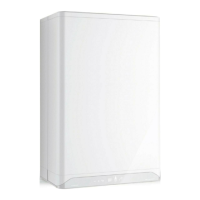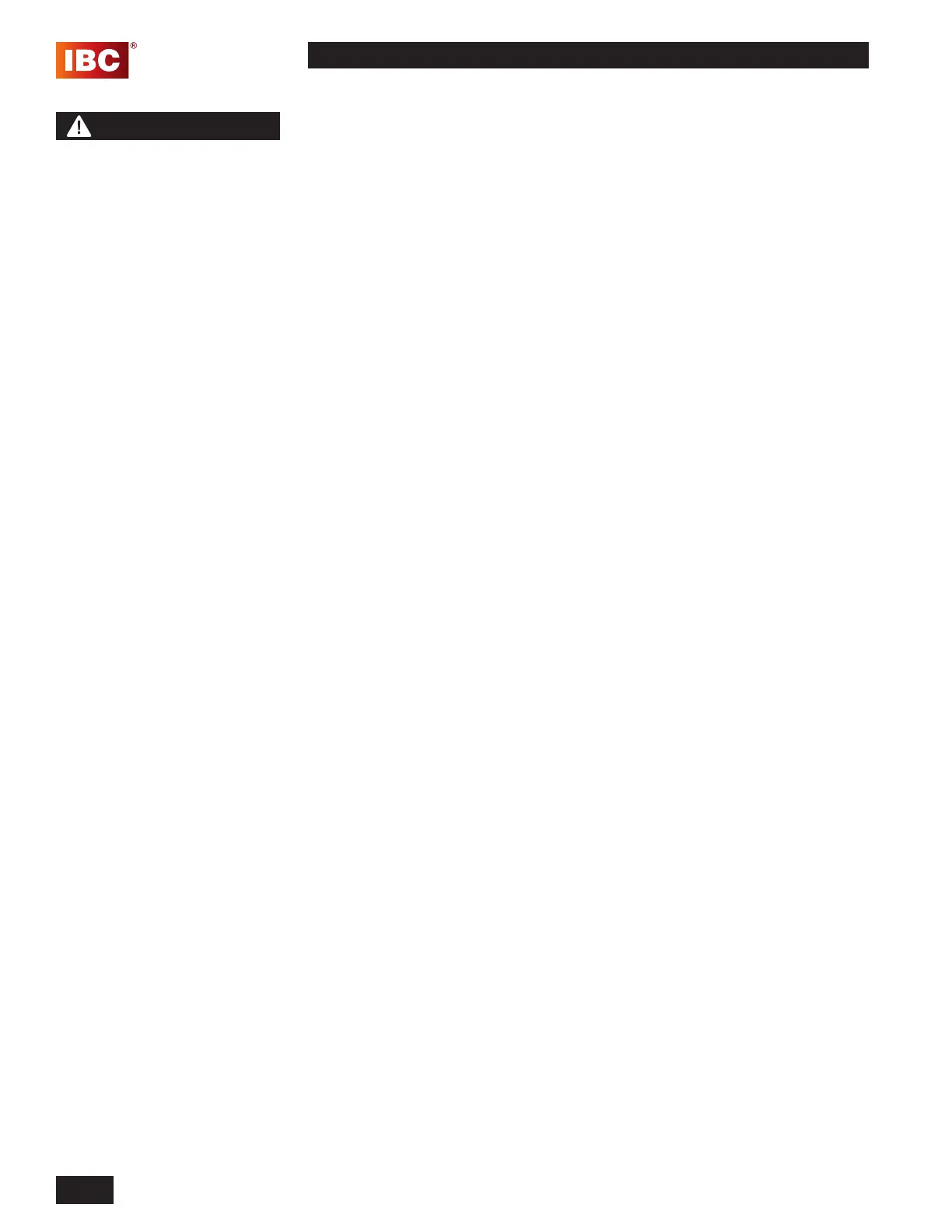INSTALLATION AND OPERATION INSTRUCTIONS
4-2
SFC COMBI BOILERS SFC-99, SFC-125
4.1.6 Heat Exchanger
During annual inspection (with the heat exchanger cover removed), examine
the heat exchanger for signs of contamination and clean if necessary. In areas
of poor gas quality or contaminated combustion air, there may be a build-up of
black plaque (typically sulfur). Other fouling agents are airborne dust, debris and
volatiles. Clean the heat exchanger surface with a stiff plastic bristle brush only.
During maintenance, the heat exchanger gasket needs to be replaced. Inspect
other gaskets, and change when needed. Refer to the heat exchanger cover
removal instructions in Section 3.5.1 for access to the combustion chamber and
heat exchanger. Observe the safety warning regarding the burner refractory
on this page.
4.1.7 Pump
Check that the pump is on in normal space heating operation, and that the water
ΔT is reasonable for the heating application.
4.1.8 Gas Piping
Check for damage or leaks, and repair as needed.
4.1.9 Control Module
• Check that unit operation is consistent with the steps in Section 2.7
Sequence of Operation.
• Check that water temperature targets and setpoint are satisfactory, and have
not been adversely amended.
• Check that the domestic hot water generation is performing as expected.
Fouling of the interior of the domestic heating coil can cause poor
performance.
4.1.10 Water Heating System
• Check water pressure and temperature. There should be no noticeable
change if the unit and system components are functioning normally. Check for
any noise in the system.
• Check heating system water piping for damage or leaks, and repair as
needed.
• Check for 12-15 psig in normal operation, and look to ensure pressure does
not run up toward 30 psig at high temperature. If pressure rises sharply,
consider replacement of the expansion tank. Check also for noise at high re
that may signal water quality problems.
• Water chemistry must be of a quality generally accepted as suitable for
hydronic applications. See Section 1.6 for details.
• Ensure that any direct “city ll” water connections are left in the closed
position to minimize exposure to leaks and ooding.
4.1.11 Freeze Protection
The unit’s controller operates the unit as needed to protect it from freezing. If the
unit and system components are vulnerable to freezing we recommend using a
freeze protection solution. Use antifreeze made specically for hydronic systems.
We recommend inhibited propylene glycol.
CAUTION
The heat exchanger has a
small amount of combustion
chamber insulation
(refractory), that contains
ceramic bers.
When exposed to extremely
high temperatures, the
ceramic bers, which contain
crystalline silica, can be
converted into cristobalite,
classied as a possible
human carcinogen.
Avoid disturbing or damaging
the refractory. If damage
occurs, contact the factory for
directions.
Avoid breathing in fumes and
contact with skin and eyes.
Follow these precautions:
1. For conditions of frequent
use or heavy exposure,
you need a respirator.
For respirators certied
by NIOSH, refer to the
“NIOSH Guide to the
Selection and Use of
Particulate Respirators
Certied under 42 CFR
84".
For current information,
contact NIOSH on 1-800-
356-4676 or on the web at
www.cdc.gov/niosh.
2. Wear long sleeved, loose
tting clothing, gloves
and eyes protection.
3. Assure adequate
ventilation.
4. Wash with soap and water
after contact.
5. Wash potentially
contaminated clothes
separately from other
laundry, and rinse clothes
thoroughly.
6. Discard used insulation in
an air tight plastic bag.
NIOSH rst aid guidelines:
• Eye contact - Irrigate and
wash immediately.
• Breathing in fumes -
Provide fresh air.

